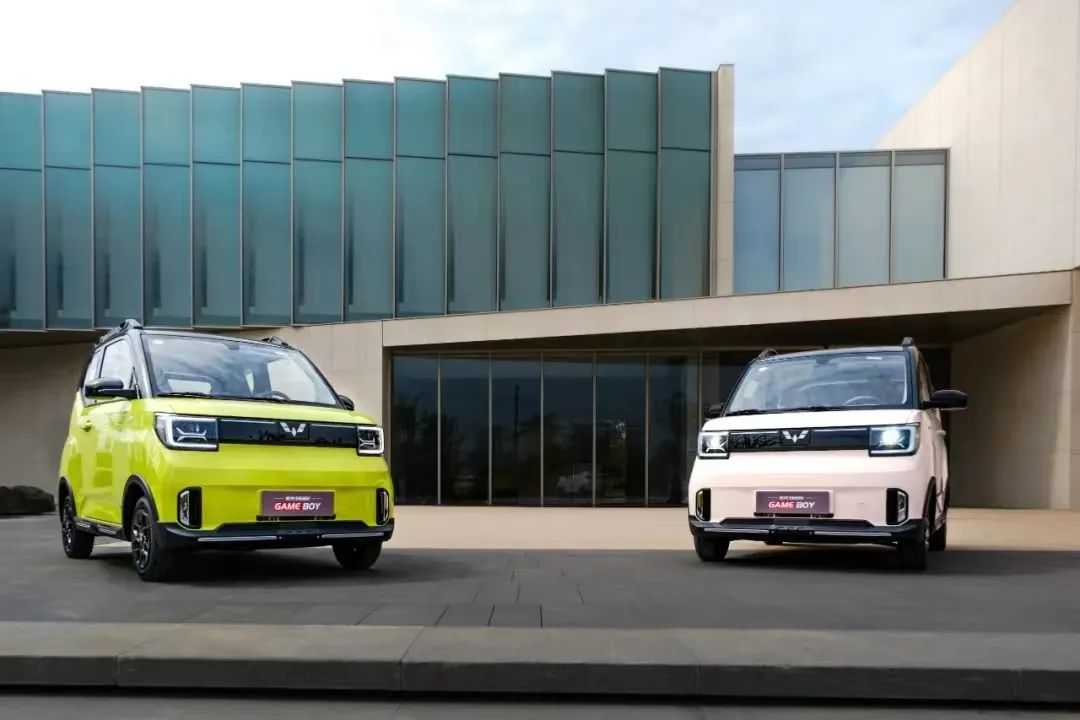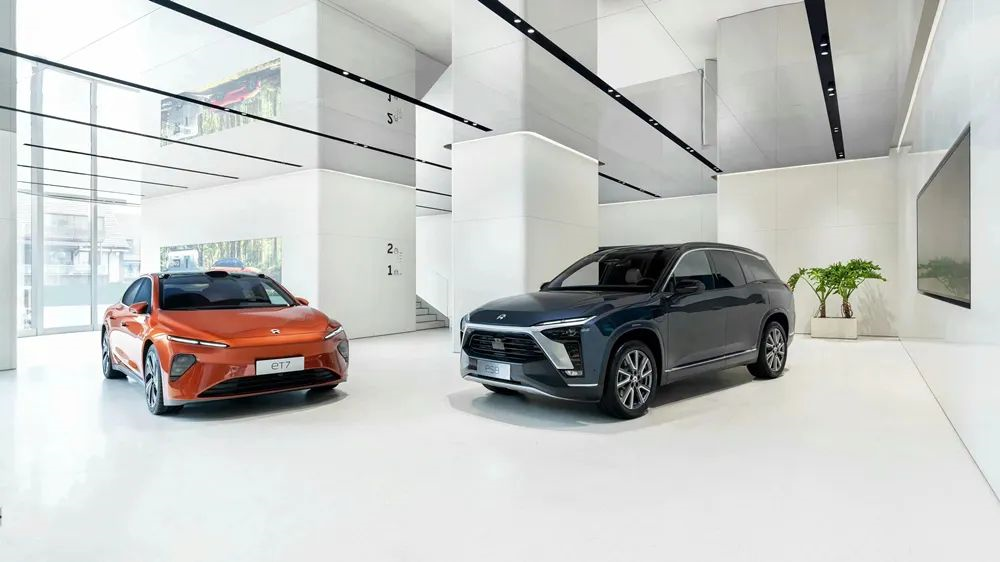Article by | Xiong Xing
Edited by | Wu Xianzhi
BYD F3, the first model with sales exceeding one million, came as a reverse engineering of Toyota Corolla; Geely has connections with Toyota 8A, 5A engines, Great Wall has connections with CRV chassis and Mitsubishi engines, all having intricate ties.
Early Japanese cars also had numerous cases of reverse engineering of American cars. Compared with forward-looking development, reverse engineering is more efficient and straightforward, with a success rate that has been market-validated for a long time. For early domestic car companies that were late to start, lacked brand power, and entered the low-end market, reverse engineering is a shortcut.
The difficult part is not reverse engineering, but forward-looking output. In less than 20 years, domestic car companies have achieved overtaking on the bend with new energy, with obvious advantages in platform, technology, and product features. Last year, eight domestic car companies occupied the top 20 of the global new energy sales list, while the German, Japanese, and American car companies that were widely regarded as reverse engineering objects only totaled four, two, and one, respectively.
In the first half of this year, domestic new energy vehicle sales accounted for 59% of the global market share, excluding Tesla, which propped up the American market with a market share of 13.6%. The market share of other car companies in Europe, America, and Japan added up to less than 30%.
In the field of new energy, the positions of foreign and domestic car companies have been exchanged, and the ones being reverse engineered have become domestic cars. BYD, NIO, Wuling Hongguang MINI EV, and others have all been disassembled by foreign car companies, and products from high, medium, and low end segments have become research objects, which sideways confirms the current industry status of domestic new energy. Nevertheless, this “low posture” familiar to domestic car companies also indicates that the competition in the second half of the new energy field will be more intense.
Scale leads, “old foundations” are not strong
Automobiles are a complex industrial cluster, involving policy drive, industrial chains, as well as the technical and brand precipitation of car companies. To explore the issue of leadership or not, the focus can be on whether the segment area has formed industry barriers, scale advantages, product advantages, and market advantages.From the policy level, from the “Ninth Five-Year Plan” to the “Fourteenth Five-Year Plan”, under the encouragement policies issued by many departments, China has the “most fertile soil for new energy” in the world. The subsidies for new energy have extended from the initial “wide network” to targeted and specific withdrawl. This reflects that the current development of new energy in China has reached the stage of “parents appropriately letting go”.
Germany has announced the cancellation of plug-in hybrid incentives by the end of the year. After the 3.4 billion euro budget for 2023-2024 is exhausted, electric vehicle subsidies will come to an end. Japan has increased its subsidies this year. The global share of new energy in both countries is still far from the glory of the era of fuel vehicles. With vastly different policies, the relationship with their relatively small domestic markets is significant, making it difficult for policies to assist car companies that heavily rely on overseas markets, focusing more on the consideration of domestic markets.
This is in stark contrast to the advantage of China’s market size. Last year, a total of 21.48 million new cars were sold in the domestic market, still the world’s largest automobile market, while the United States, which ranked second, sold 14.947 million cars, equivalent to 69% of China’s market. China’s market still has a huge base for the transformation to new energy.
The potential depends on both the base and the purchasing power.

Last year, the domestic GDP growth rate reached 8.1%, and the growth rate of per capita disposable income nationwide was 9.1%. From January to September this year, the production and sales of automobiles in China increased by 7.4% and 4.4% year-on-year, respectively. Due to objective factors such as the pandemic, chip shortage, and rising prices of raw materials, the production capacity of various automakers was affected to varying degrees. Overall, the market advantage is evident. Compared with the United States, where the per capita automobile ownership rate is 83%, Japan at 60%, and Germany at 55%, China’s rate is only 21%.The user base and potential user base are undoubtedly the largest in the world, providing strong support for domestic automakers to scale down costs. When the Wuling Hongguang MINI EV was dissected, the feedback from Japanese automakers was that they could not produce a product of the same quality at the same price.
However, most manufacturers’ focus on scaling up is due to the insufficient strength of industry barriers. Cross-border car-making is not uncommon, and new energy has lowered the threshold for car-making. Mainstream carmakers have all developed their own technology directions and features, and existing industry barriers are easily bypassed by a global supply chain.
For new energy vehicle companies, both a focus on technology and a focus on scale are in an environment of abundant “nutrients” for growth. Most of the new forces are still under the heavy pressure of losses, but they still hold billions of dollars in funds and occupy their own high ground in the race dominated by Tesla and BYD. The general difficulty of short-term profitability has not stopped new entrants from entering the arena, and the twists and turns of the race are even more pronounced.
In recent years, foreign automakers have gradually phased out oil-to-electricity conversions and launched their own new energy technology platforms, which are already a generation behind. Domestic new energy vehicle companies have completed a phase of development in their own industry chains.
Last year, Ningde Times became the world’s largest power battery supplier, with BYD ranking fourth. Zhongchuan Innovation Navigation, Gotion High-tech, Farasis Energy, and SVOLT Energy came next. From January to August this year, six Chinese companies still occupy the top ten spots in power battery installation volume, with a market share of over half, while Japan has one and South Korea has three.
For manufacturers who have fallen significantly behind in installation volume, the upstream sector is the new battleground for breaking through. In the new phase, each company tends to be self-sufficient and has not yet formed a giant. However, in the face of the scale and financial advantages of foreign old-school manufacturers, domestic manufacturers are not yet in the same league.
This has a significant impact on the scale of raw material layout, as expanded funds and vehicle sales are required for the production and sale of raw materials, and any overflow is a problem.The global automotive companies can easily achieve quick global deployment of new energy products through existing systems such as global factories and channels. On the other hand, Chery, which went international early, sold a total of 424,000 cars in the first half of the year, with 118,000 units sold overseas, accounting for 27% of its total sales. Tesla sold a total of 560,000 cars in the first half of the year, with 330,000 units sold overseas, accounting for 58%.
For domestic car companies going international, factory and channel construction takes time, so short-term capacity digestion still depends on the domestic market. On the other hand, the high maturity of the overseas system of foreign car companies is their long-term advantage.
The top ten semiconductor companies for cars in the world have a 46% market share, and no domestic brands are currently included. Intelligentization will be one of the focuses of the second half of the year, and the chip bottleneck is essential to the upstream raw materials.
Overall, the reverse engineering of domestic brands is a side view of the rise of the Chinese automotive industry. It is necessary to treat the leading edge and the shortcoming rationally. Compared with the one-sided situation of foreign car companies in the era of gasoline cars, there is still a long way to go for domestic brands. The objects of dismantling and analyzing will be interchanged, meaning that foreign car companies will make a comeback.
Going Overseas
The “Matthew effect” in the domestic auto market is evident. For leading manufacturers, growth may still need to come from emerging markets.
According to data from the China Association of Automobile Manufacturers, the cumulative penetration rate of new energy in China was 13.4% last year, 21.6% in the first half of this year, and 26% from January to September, with a growth rate of about 8% in half a year. Based on this estimate, the penetration rate in year-end should reach about 30%. The cumulative penetration rate was 2.8% in 2017 and 5.8% in 2020.
It can be seen that the growth rate of the cumulative penetration rate of new energy is increasing: it took five years to go from 2% to 13.4%, but only one year from 13.4% to 30%. Although the domestic market has a strong driving force, it also means that the bottleneck period is not far away.## Traditional Automakers Benefit from New Energy Vehicle Policies
Traditional automakers are seizing the opportunity presented by new energy vehicles to surpass previous sales records. BYD has sold over 1.18 million vehicles from January to September, far exceeding last year’s total of 730,000. The company’s profits for the first three quarters of this year also surpassed the total for the previous three years. In the past five years, the annual sales record for BYD was only 520,700 vehicles in 2016-2020. As companies like GAC and Geely increase their efforts to transform, there is still room for growth in the overall domestic new energy vehicle market.
Domestic Automakers Expand Overseas
As the market grows, auto companies are also expanding overseas to answer the challenge of a coming inventory competition. Foreign automakers have given up some market share due to their relatively slow transformation processes, leaving a market window that will not last too long. For domestic auto giants, going overseas has become incredibly important.
BYD is expected to return to the top spot for global new energy vehicle sales this year, reaching new heights and calling for an unprecedented level of market demand. BYD, which began selling vehicles internationally in 1998, has traditionally focused on commercial vehicles. This time, the emphasis of BYD’s international expansion will be passenger cars.
Currently, BYD automobiles are sold in Japan, Southeast Asia, Latin America, and Europe. However, it wasn’t until September this year that the company’s first overseas factory was confirmed to be located in Thailand. There is still a void in nearby capacity for Europe and Latin America. Tesla currently has only two factories overseas, in Berlin and Shanghai, servicing the global Chinese and strong purchasing power European markets.
Compared to more mature markets, where there are already many competitors, the size and brand advantages of domestic automakers are not yet apparent, meaning the market is beginning anew.
Other leading domestic car manufacturers, including Geely and Great Wall Motors, place a greater emphasis on Southeast Asia, especially Thailand. In 2008, Thailand established the target of becoming the “Detroit of the East.” It has lowered import duties on pure electric vehicles below 2 million and below 7 million baht by 40% and 20%, respectively, and reduced consumption taxes from 8% to 2%. Even more attractive to car manufacturers is the option to have 100% foreign ownership, perpetual land ownership, and tax exemption for up to 8 years.Choosing Thailand, not only for its “small” market with an annual sales volume of 1 million units but also for its potential, as a “springboard” to Southeast Asia cannot be ignored. Last year, there was no Southeast Asian nation in the Top 25 countries for new energy vehicle penetration rate globally, classified as “others” with a total percentage of only 1.67%. Coupled with policy support, there is the confidence to compete for global new energy production capacity, which fits the expansion needs of domestic manufacturers.
Similarly, Japan has a penetration rate of only 0.71% last year. Starting this year, Japan has increased policy support, and the local market, which Toyota THS and Honda i-MMD could not move, may see a turning point. Domestic car companies are not the only ones who can take advantage of the “fast train”; BYD also applies. Disrupting and analyzing BYD is not surprising.
Compared with Southeast Asia, where the market is changing technologies, domestic car companies will encounter greater competition in Japan’s market and have already felt resistance in the European market.
Nio’s strategy of “battery leasing only, not for sale” has pushed the starting price of its products below that of competitors BBA, but only one year after its entry into Europe, it was sued by Audi with the reason of trademark infringement in Munich, Germany.
Nio announced that it will open its centers in Germany and the Netherlands next year and plan to expand its business in Denmark and Sweden. This concerns the second-largest “stronghold” of German car companies, including its home market. Referring to the various suppressions encountered by domestic phones when going abroad, Audi only fired the first shot in the defense of European car companies, and the asymmetric encounter of domestic car companies going abroad is inevitable.
Last year, Nio’s domestic sales reached 90,000 units, and Audi, which has the best sales of new energy vehicles in China, sold 72,000 units. BMW, which has the highest global market sales volume, sold 227,000 new energy vehicles, while BMW sold about 300,000 and Audi sold 81,000 new energy vehicles.
 # The Gap Between Chinese Automakers and BBA Remains Significant
# The Gap Between Chinese Automakers and BBA Remains Significant
As of now, NIO still has a large gap in overall sales volume compared to Mercedes-Benz and BMW. The fact that NIO is slightly ahead in China doesn’t prove that they have the global competitiveness to compete head-to-head with BBA. However, this year, Tesla has already surpassed Volkswagen in sales volume in the German market, indicating that traditional automakers are not invincible even in their own home turf. Disassembling and researching better-performing products also demonstrates their determination to bounce back. The “honeymoon period” for domestic automakers to go global may not be too long.
Conclusion:
Last year, the tenth-largest global automaker PSA Group sold 2.51 million vehicles, while Toyota sold 95.28 million vehicles. Based on this estimation, even if BYD can achieve sales of 2 million vehicles this year, it is still difficult to enter the top ten. The advantage of foreign traditional automakers still exists in their huge size and mature automotive industry foundation, which is not easy to rebuild from scratch. Domestic automakers still have a long and obstructed journey to go global, while their weaknesses in vehicle regulations, semiconductor industry, and other aspects will cause great uncertainty for their rise.
We cannot deny our advantages, but we cannot ignore the distance. In the new energy era, thirty years are not necessary for a vast difference to arise.
This article is a translation by ChatGPT of a Chinese report from 42HOW. If you have any questions about it, please email bd@42how.com.
